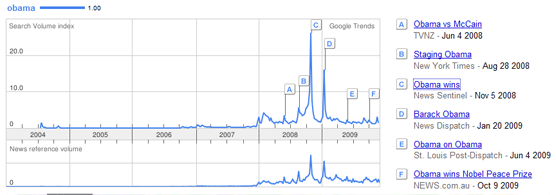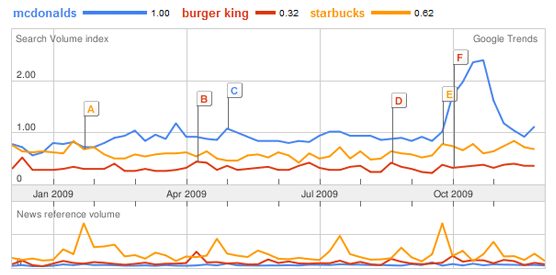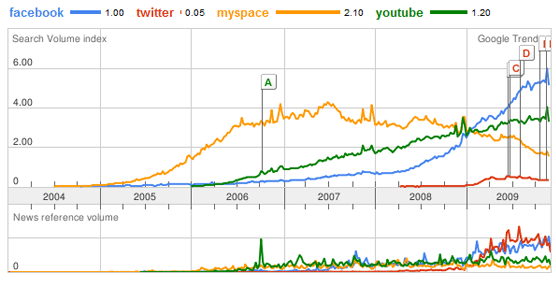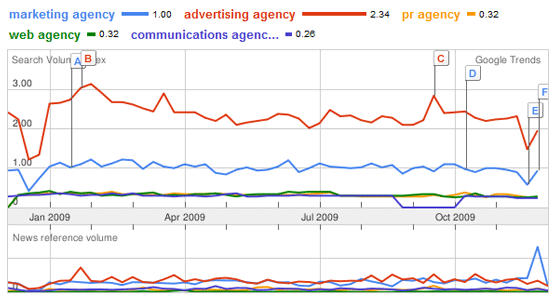
An interesting read from my Mediapost email inbox:
Steve Garton, Executive Director of Synovate's media research group, said, "... understanding the media channels that are important in consumers' everyday lives, marketers can derive valuable insights on where consumers are the most receptive to marketing communications."
The cell phone has become an increasingly prevalent channel for Americans to receive news and information, and the rise in smart phones has increased mobile marketing and advertising efforts. 35% percent of people in the US say they cannot live without their cell phones, but as their use of mobile devices has grown, their attitude towards increased mobile marketing is still a bit hesitant. 39% of Americans feel the amount of ads they see now are sufficient, while 54% say they would not accept more ads via their mobile devices even if paid to do so.
58% of Americans say they can't live without the Internet, the highest response across all 11 markets surveyed. However, even though 56% of people in the US say there are too many ads on the Internet, and 41% say they avoid websites with intrusive ads more often than they did a year ago, 52% are open to seeing more ads on the Internet if paid to do so.
Only 5% of Americans said they could easily live without TV, while 34% said they can't live without it. Across all markets surveyed, people, 68% globally and 71% of Americans think there are too many ads on TV. The report suggests that this may be why 48% of people globally and 44% in the US say they skip ads more often than they did a year ago, by either turning down the TV, changing the channel or fast forwarding through commercials.
However, 52% of Americans also say they'd be willing to watch the ads if paid to watch them, such as through money off their cable bill. The US was the second highest market globally that said this, after Spain at 57%.
Americans show less use of social media to promote a brand or ad compared to the rest of the globe, says the study. 13% of people globally, and 8% of Americans, say they are discussing ads with their friends more than they did a year ago, while 11% globally and 8% of Americans are searching more for ads online on the social network.
68% of people globally, and 63% of Americans, say they have never promoted a brand on their social networking page, though 9% of Americans say they are doing this more often compared to a year ago. The number of people following brands on Twitter remains low, with only 5% of people globally and 4% of Americans saying they've done this.
In responding to the question "In thinking about the ads you enjoy the most, which characteristic is most common in these ads?" the variations of responses to this question are enlightening, says the report:
- Ads that are Innovative / Unique are most well-received, with more than one in five (21%) of people globally and in the US liking them
- Spontaneous / Playful (the second most admired attribute), liked by 16% of people around the globe and 17% in the US
- Optimistic / Happy Straightforward (third most admired), with 14% liking this globally and 12% in the US
Garton said, "... the most popular ads tap into this need of fun and light-heartedness. People are down and bored with the negative news... and want something upbeat to lift their spirits."
With regard for the potential for behavioral marketing, respondents were asked, "How would you feel if websites and TV channels developed technology that monitored what you use and watch so they would only show ads on brands and products they thought would interest you?"
- 26% globally, and 32% of Americans, say they would like this technology if none of the data could identify them
- An additional 35% of Americans aren't convinced they couldn't be individually identified, so they aren't interested in this technology at all








 by Aaron Baar
by Aaron Baar  by Karl Greenberg
by Karl Greenberg  by Sarah Mahoney
by Sarah Mahoney 


 by Tanya Irwin
by Tanya Irwin  by Aaron Baar
by Aaron Baar  by Sarah Mahoney
by Sarah Mahoney 
 Nike's MVPs (Most Valuable Puppets) are back in a series of TV spots promoting Nike Basketball gear. The first spot features puppet versions of LeBron James and Kobe Bryant driving with the top down and dishing plates of trash talk. The topic: whether a lion (James) would eat a black mamba (Bryant). Both deliver compelling points to their argument, but the spot ends with the song, "The Lion Sleeps Tonight." Enough said.
Nike's MVPs (Most Valuable Puppets) are back in a series of TV spots promoting Nike Basketball gear. The first spot features puppet versions of LeBron James and Kobe Bryant driving with the top down and dishing plates of trash talk. The topic: whether a lion (James) would eat a black mamba (Bryant). Both deliver compelling points to their argument, but the spot ends with the song, "The Lion Sleeps Tonight." Enough said.  Let's keep talking detectives. kgb, the text service that answers questions when a person isn't near, say, Google, launched a TV and online partnership with the Warner Bros. release of "Sherlock Holmes." "When the world's greatest detective has a question, who does he ask?" broods the TV ad. Cue the kgb experts, who promptly answer Holmes' toxic text. Did we forget in what time period "Sherlock Holmes" takes place? Maybe the next movie partnership will use a character capable of text-messaging.
Let's keep talking detectives. kgb, the text service that answers questions when a person isn't near, say, Google, launched a TV and online partnership with the Warner Bros. release of "Sherlock Holmes." "When the world's greatest detective has a question, who does he ask?" broods the TV ad. Cue the kgb experts, who promptly answer Holmes' toxic text. Did we forget in what time period "Sherlock Holmes" takes place? Maybe the next movie partnership will use a character capable of text-messaging.  LG launched four hysterical PSAs starring James Lipton and his beard, urging teens to think before texting gossip or inappropriate pictures of themselves. Teens think twice about sending dirty texts, once they don Lipton's beard in the "give it a ponder" campaign. A girl contemplates sending a text rumor to her friends in an effort to make a play for one friend's boyfriend. One stroke of Lipton's beard and she sees things differently. She doesn't want to take part in a catfight. I did love Lipton's cat noises, though.
LG launched four hysterical PSAs starring James Lipton and his beard, urging teens to think before texting gossip or inappropriate pictures of themselves. Teens think twice about sending dirty texts, once they don Lipton's beard in the "give it a ponder" campaign. A girl contemplates sending a text rumor to her friends in an effort to make a play for one friend's boyfriend. One stroke of Lipton's beard and she sees things differently. She doesn't want to take part in a catfight. I did love Lipton's cat noises, though.  The look of death stares back at you in a TV spot for "Assassins Creed 2." Blank stares belong to victims of main character Ezio, who is shown later in the ad fighting and attacking enemies while the rhythmic sound of a bell tower rings. "Live by the creed," concludes the ad,
The look of death stares back at you in a TV spot for "Assassins Creed 2." Blank stares belong to victims of main character Ezio, who is shown later in the ad fighting and attacking enemies while the rhythmic sound of a bell tower rings. "Live by the creed," concludes the ad,  Lady Gaga has a "Poker Face" and PlayStation 3 gamers reveal their best "Playface" in a branding ad running in Japan. Gamers elicit looks of happiness, sadness, anger, grimaces, shock, confrontation and eye-twitching while playing PlayStation 3. And you thought love brought out a gamut of emotions.
Lady Gaga has a "Poker Face" and PlayStation 3 gamers reveal their best "Playface" in a branding ad running in Japan. Gamers elicit looks of happiness, sadness, anger, grimaces, shock, confrontation and eye-twitching while playing PlayStation 3. And you thought love brought out a gamut of emotions.  Looks don't matter if you're a Verizon Droid phone. It's all about production value. Droid would rather "rip through the Web like a circular saw through a ripe banana. Is it a precious porcelain figurine of a phone? In truth, no." Droid knows its strengths. "It's not a princess, it's a robot," ends "Pretty."
Looks don't matter if you're a Verizon Droid phone. It's all about production value. Droid would rather "rip through the Web like a circular saw through a ripe banana. Is it a precious porcelain figurine of a phone? In truth, no." Droid knows its strengths. "It's not a princess, it's a robot," ends "Pretty."  When I think classical piano music, I think smart phone touchscreens. Doesn't everyone? AT&T filmed pianist Kwan Yi sitting at a piano, yet striking smart phone touchscreens. "When your touchscreen runs on the nation's fastest 3G network, the difference can be dramatic," concludes the voiceover, which also states that touchscreens run faster on AT&T.
When I think classical piano music, I think smart phone touchscreens. Doesn't everyone? AT&T filmed pianist Kwan Yi sitting at a piano, yet striking smart phone touchscreens. "When your touchscreen runs on the nation's fastest 3G network, the difference can be dramatic," concludes the voiceover, which also states that touchscreens run faster on AT&T.  Growers Cider created a
Growers Cider created a  Random iPhone App of the week: Are you an American who can't get enough of European sports? Eurosport's free sports app may help simplify your life. The free app is available in nine different languages, along with an international version (in English) and offers live sports content, breaking sports-news coverage, player stats and standings. The app is available for download from the
Random iPhone App of the week: Are you an American who can't get enough of European sports? Eurosport's free sports app may help simplify your life. The free app is available in nine different languages, along with an international version (in English) and offers live sports content, breaking sports-news coverage, player stats and standings. The app is available for download from the 
 by Karlene Lukovitz
by Karlene Lukovitz  by Karl Greenberg
by Karl Greenberg  by Aaron Baar
by Aaron Baar 





 by Tanya Irwin
by Tanya Irwin  by Aaron Baar
by Aaron Baar  by Karl Greenberg
by Karl Greenberg 










